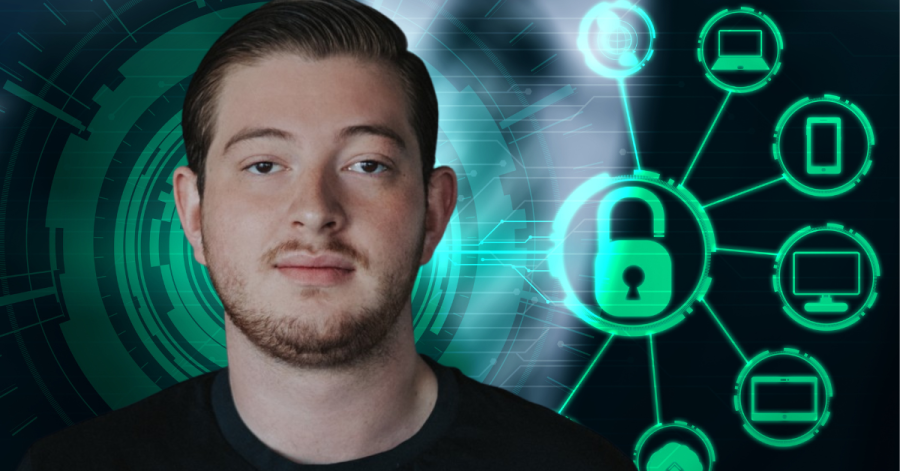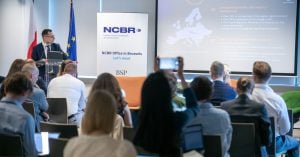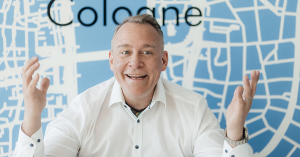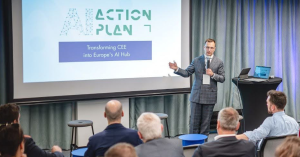Don’t you have a special owe for founders who bootstrap? I do. Bring this type of devotion one level higher and you end up with a bootstrapping solo founder. Sound like a recipe for a disaster? It could be but not in this story.
Asen Levov is the 25-year-old founder of IRIS, the biometrics software and hardware solution for personal identification which is powered by AI. Born and raised in Bulgaria, Asen got his first taste of entrepreneurship back in high school. Before moving to study Entrepreneurship and Innovation at the University of Greenwich, he had started more than a dozen various businesses including a web design and marketing agency, multiplayer gaming servers, several dropshipping stores, a seasonal sea-side restaurant, and a web-based online game.
“Most of these types of solo endeavors turned out unsuccessful, but they definitely helped me understand that I have a passion for problem-solving. Ever since I was little, I dreamt of finding a way to approach a problem that no one else had thought of before. However, it took me some time to realize that if I was going to devote 5 to 10 years of my life to developing a solution, this problem had to be big enough. My belief is that science is constrained by many laws, which tend to restrict researchers, and that we’re just yet discovering many of these rules can actually be broken. I finally found my dream challenge in revolutionizing the way we carry our identity, and I have always been comfortable with the thought it was going to be a while until I saw any fruits from this work. However, it took me actually doing it to realize that’s going to be at least a decade-long endeavor,” Asen Levov shares with The Recursive.
How does a bootstrapping, Gen Z, solo founder without a tech background survive in the startup world? Dig into the story to find out.
Nailing down the niche
“For me, the Aha moment and the whole idea to start working on IRIS came from a simple situation that I am sure many of us have been through. I happened to forget the PIN of my debit card and I couldn’t access my money for a couple of days since the procedure for changing this four-letter code took so long. A couple of weeks later that same card got stolen online and hackers stole my money,” Asen remembers.
This made him think about whether there aren’t smarter ways to prove our identity and the possession of the money we owe. “I started researching this in-depth and came to the conclusion that we don’t really own our money or our identity. Instead, our identity is a piece of plastic or paper that we are given by the government or other institutions. Should we lose this plastic, we are losing the ability to prove our identity,” Asen explains.
Delving deeper into the problem, he came into his second aha moment which helped him nail down a niche – cloud-based AI biometric identification.
“At that time, everyone was already using the touch ID biometrics of the iPhone. So I started to wonder why isn’t the technology spreading to other use cases such as personal identification. It turned out that the mass use of biometrics has certain limitations simply because it demands large computing powers which back then were still quite expensive and not easy to scale. However, with the rapid advances of deep learning and AI, which allow a system to sort through tremendous amounts of data in real-time, mass biometric identification as we have seen in the movies has become a more viable concept,” Asen points out.
The technology opportunity in scalability was there, but the problem of security remained. For a long time, Asen was searching for a suitable existing hardware solution that could be used alongside his software. In the end, he decided to build it from scratch
“I don’t have a professional or academic technical background, but I have always been very curious about technology and considered it a must to know the basics of everything that goes into a product including architecture, programming, and engineering. I’ve never been resistant to learning something new, however complex it seemed at first, and getting my hands dirty trying it out. That is why I can explain in simple terms what goes into the process of hardware development. In our case it was identifying the underlying technologies and researching potential components that could generate that result. The majority of the work then goes into testing and analyzing results, before finally identifying the perfect combination and connections between them. The last part of the job is about coming up with an efficient design and writing the software to make all those moving parts work together smoothly,” Asen explains.
Starting a side hustle to finance your main hustle
As a matter of fact, the summer seaside bar wasn’t the only real estate business of Asen. Around a year and a half after starting to work on IRIS, he co-founded Sketch Coworking Spaces with the sole purpose of earning some extra money to finance the development of IRIS.
“To some people, it may seem strange that started a new effort-intensive side project while I was bootstrapping my primary business project IRIS. The reason was that attracting funding for IRIS was extremely hard at the beginning, while fundraising for a coworking business was at that time easier and more probable,” Asen Levov explains.
Starting with one location, Asen and his team managed to expand to a second one. As of the beginning of 2022 though he is no longer part of the operational team of Sketch. “At some point I realized that I was devoting more time to my side hustle than to my primary project. And that was the moment that I decided to focus all of my energy back on IRIS,” Asen shares.
Moving biometrics to the cloud
“Unlike most of the established biometrics solutions which store all of the biometric data on local servers, IRIS uses cloud architecture which allows us to transfer the identity of one person to every other IRIS device around the world. The skepticism in the level of security of the cloud is gone and now more and more companies that operate with sensitive data are starting to transition to cloud architecture,” Asen says.
Right now IRIS has pilot requests from 18 clients in Bulgaria and the UK including industrial facilities, office buildings, hospitals, and even a bank. Asen is in the final stages of completing the last series of product iterations and plans to soon release on the market two products for decreasing fraud and streamlining identity management for corporate clients.
Bootstrapping a tech startup as a solo founder
Asen seems to have found a formula that works for him as a non-tech solo founder. He is working with contractors who enter his business as CTOs.
“In the beginning, I tried for a long time working with a smaller team but came to realize that just three people cannot build such a sophisticated product that requires a wide range of deep technical knowledge in hardware, software, and AI. For a long time, I did not know what to do and how to approach this obstacle, but I found the solution by partnering with other larger teams, each with their own area of expertise and me working as a project leader to make everything connect and work together. As of now, I’m working with four such companies that are helping me with wrapping up the first stages of product development,” Asen concludes.
At the beginning of 2023, IRIS managed to raise angel funding which allowed Asen to complete his product development and gain his first customers. He is planning to close one bigger round by the end of the year which will help him prepare for an official launch.







